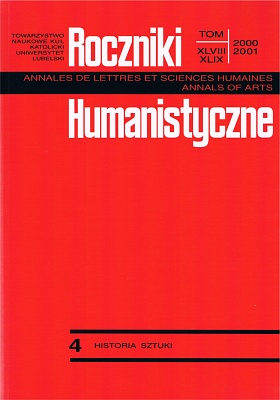The Twilight of Polish Art Galleries in 20th-century London
Abstract
The article foreshadows a bigger publication, now in preparation, devoted to history of exhibitions organized by Polish art galleries in London after World War II. So far, the knowledge of the range of importance of Polish exhibiting institutions and their role in promoting both artists and the newest trends in European art in the second half of the 20th century is only fragmentary. The author of the article presents a history of three Polish galleries: Drian Gallery, Centaur Gallery and Grabowski Gallery and an outline of their activities. Among these three, the one that functioned longest, as it was 43 years (from 1957 to 2000), is Drian Gallery, owned by Halima Nałęcz. One year before, in 1999, the official closing of Centaur Gallery took place, the place which was managed by Dinah and Jan Wieliczko. The gallery started its activities in London in 1960, working incessantly for almost 40 years. The shortest life, 16 years, had Grabowski Gallery, created in 1959 by Mateusz Bronisław Grabowski, a pharmacist by education, and closed in 1975. Each of these galleries had its own individual profile, its own key for selecting artist for exhibition and promotion, and its own ways to assure their functioning on the difficult London art market. Apart from the activities of these institutions, an important role in the history of Polish presence on the London cultural scene was played by organizations belonging to a different category i.e. galleries-studios. These were the following: Feliks Topolski Memoir of Century, open to visitors once every three months and a gallery of works by Marian Bohusz-Szyszko, on a permanent exhibition in the buildings of St. Christopher's Hospice in London-Sydenham. Apart from that, Polish Social and Cultural Association in London (POSK) is a host to a collection of works by Polish artists, contemporary and former members of the Association of Polish Artists in Great Britain. However, this is just an exhibition, not a gallery, which partly illustrates the output of Polish painters – mostly graduates of the School of Easel Painting at the Polish University Abroad. Being brought to attention many times, e.g. at the I Congress for Polish Culture on Emigration in 1970, the appeal to attempt a through historical analysis and an evaluation of the achievements of Polish galleries in their exhibiting and promotional work in the second half of the 20th century in London is a vital task. Together with establishing its importance in the context of Polish history of art and Polish cultural heritage both in Poland and on emigration this task seems very urgent, if it is not a belated one. It may seem late in the light of `passing away' of patrons, art lovers, gallery owners and artists of the pre-war generation themselves, which happens more and more often. The end of the 20th century provides another incentive to this work establishing time borders both in the context of Polish history of art and in the history of a remarkable phenomenon of `Polish' London in the second half of the 20th century.
Copyright (c) 2001 Roczniki Humanistyczne

This work is licensed under a Creative Commons Attribution-NonCommercial-NoDerivatives 4.0 International License.





